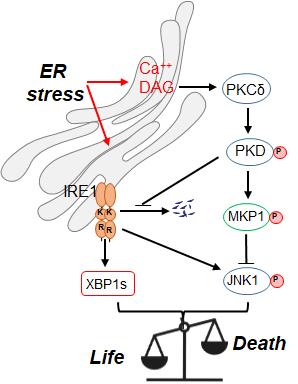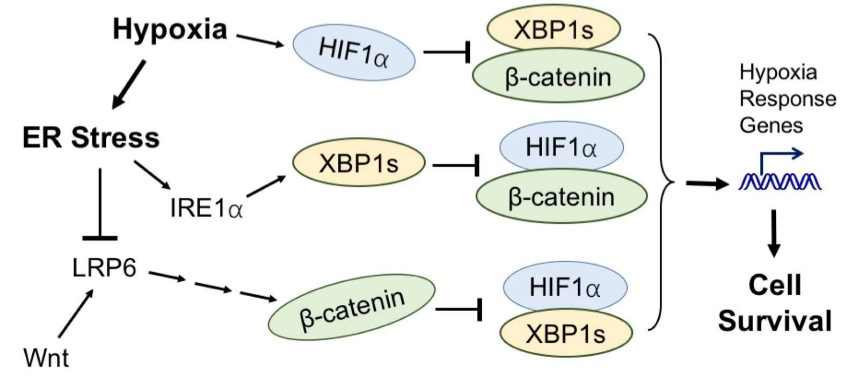In July 2019, Professor Yi Ping and Professor Liu Jianmiao, members of the research team of Professor Liu Jianfeng, Key Laboratory of Molecular Biophysics of Ministry of Education, Huazhong University of Science and Technology, published two articles on ER stress in Journal of Biological Chemistry, an internationally renowned Journal of biochemistry. The new research results are supported by the National Key R&D Program of the Ministry of Science and Technology, the National Natural Science Foundation of China, the State Foreign Affairs Bureau and the 111 Intelligence Introduction Program of the Ministry of Education.
Endoplasmic reticulum (ER) plays a key role in various cellular processes, including protein synthesis, folding, lipid synthesis, cellular calcium and redox homeostasis. Its homeostasis is essential for maintaining normal cell function. When the endoplasmic reticulum of a cell is unable to bear the load of misfolded proteins, it triggers ER stress and activates the UPR (Unfolded Protein Response) signaling pathway to enhance the protein processing capacity of ER. Under ER stress, it plays an important role in regulating the fate of cells, and the specific molecular mechanisms need to be further understood.

1) Prof. Jianfeng Liu’s lab had found that PKD1 plays an important role in protecting cell from ER stress -induced apoptosis, which has been published as “An integrated PKD1-dependent signaling network amplifies IRE1 prosurvival signaling” on July 19th 2019. This work was finished by Dr. Wu Shiyong and Dr. Ma Shumin under the guidance of Prof. Jianfeng Liu and Associate Professor Ping Yi. In this article, there are two diverse mechanisms that are responsible for this effect. First, PKD1 increases the stability of the IRE1 protein and its activity, which leads to an increase in the expression of XBP1s and its target genes. This positive regulatory loop from PKD1 enhances the contribution of IRE1 signaling to the release of ER stress and the increase of cell resistance to ER stress. Second, PKD1 activation switches the kinetics of JNK activation from a sustained to a transient mode through MKP1, which reverses the pro-apoptotic effect of the IRE1/JNKsignaling axis.
2) On July 26, 2019, a research paper entitled "Hypoxic ER stress suppresses β-catenin expression and promotes cooperation between the transcription factors XBP1s and HIF1α for cell survival signaling" was published online. Under the guidance of Professor Liu Jianfeng, Professor Liu Jianmiao and Professor Liu Yong of Wuhan University, doctoral student Xia Zhixiong found that hypoxic ER stress promoted the expression of XBP1s, and inhibited the downstream signal of Wnt by down-regulating the expression of Wnt coreceptor LRP6 and β-catenin. The interaction of β-catenin with XBP1s and HIF1α inhibits the expression of target genes of HIF1α mediated by XBP1s. These results reveal a new mechanism of regulating cell survival mediated by Wnt/β-catenin pathway and ER stress pathway in hypoxia.
